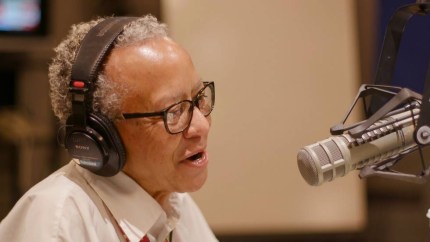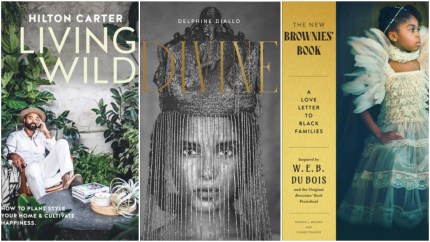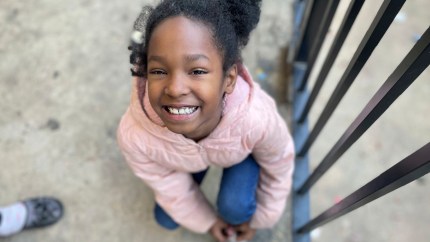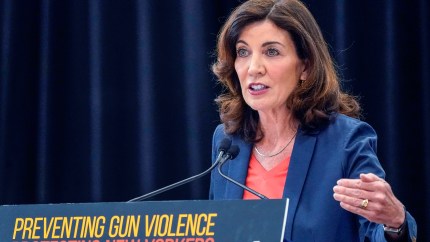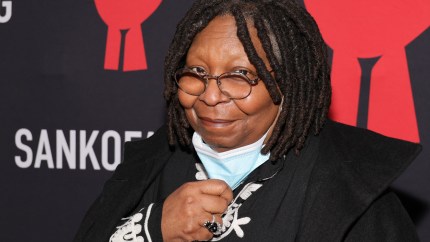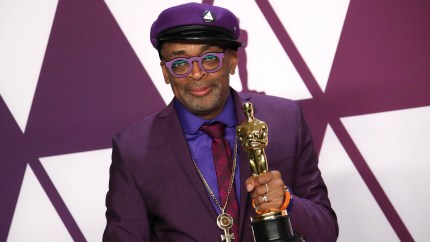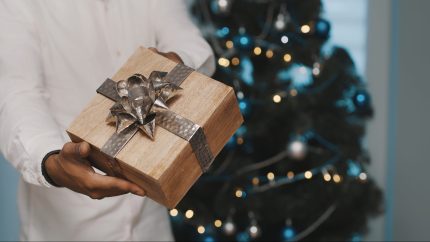Why don’t we see more gray hair in the natural hair movement?
For Black women, gray hair and the natural hair movement seem to be strangely separate worlds.
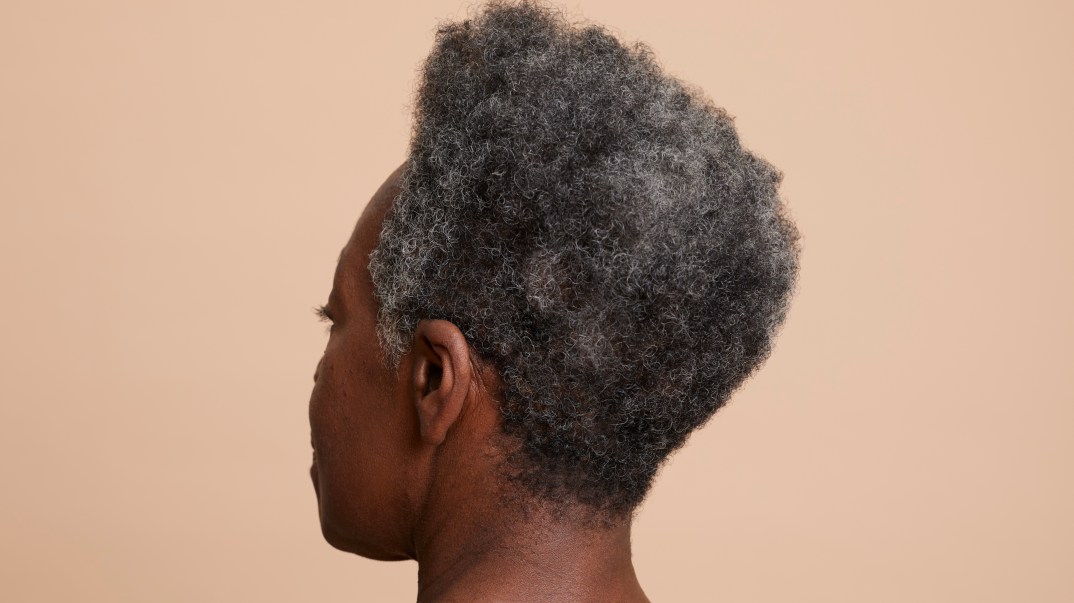
During my first pregnancy at age 36, my skin was resplendent, as it had been decades earlier. I walked around with the knowledge I was creating life in my womb, which was young enough to be fertile. Even my fingernails felt strong and vital.
Then gray hairs started sprouting from my temples, and I felt some kind of way about it.
For context, I have been more or less au naturel my entire life. I’m a biracial Black woman, and I have never colored or relaxed my tight, dark-brown corkscrews.
Growing up in Texas in the 1990s, white kids insulted my hair throughout middle and high school. They taunted me, saying I must have lice. They’d yank my hair and stick pencils and bits of paper in it. They claimed I had pubic hair growing out of my head, making dating seem impossible. So, to hide my volume and texture, I pulled my hair back into a tight bun, tried to make it “lay down” with heavy, crunchy products, and got it “thinned” at the hairdresser.
I continued trying to hide my hair throughout college and graduate school as my classmates continued to insult me. In the lecture hall, they insisted they couldn’t see the board with my “rat’s nest” in the way. When I moved to New York and entered the full-time workforce in my early 20s, I made sure to slick my hair back in job interviews to look more “professional,” remembering that so many people had called my hair unclean and unkempt.
As I started using social media in my late 20s, I stumbled upon several Black women who really embraced their natural hair. I saw recommendations for products on Instagram and tutorials for 3C curls like mine on YouTube — how to moisturize, define, and protect them at night.
As it turned out, it wasn’t just a few influencers — the 2010s saw a new-millennial natural hair movement. It felt like a resurgence of the “Black Is Beautiful” movement of the ’60s when many Black people proudly wore afros as a political statement amid that era’s Civil Rights Movement. When I think about Black Is Beautiful, I think of the late photographer Kwame Brathwaite, who popularized the slogan with his images of Harlem residents and the Grandassa Models, who walked in fashion shows to celebrate their natural Black features. This Black empowerment was part of a significant cultural shift that saw the passage of the Civil Rights Act of 1964 and the Voting Rights Act of 1965.
A half-century later, Black women hit some important milestones during the 2010s natural hair movement as well. In 2017, the Army ended its ban on locs, and the CROWN Act, prohibiting race-based hair discrimination, began passing at the state level in California in 2019. A 2023 research study co-commissioned by Dove and LinkedIn showed that Black women’s hair is 2.5 times more likely to be perceived as unprofessional and that 66% of Black women change their hair for a job interview.
The natural hair movement gave me the affirmation I needed to be myself. I started wearing my hair out every day, on job interviews and on dates, shorter and more voluminous than before. I got married on a windy, humid, rainy day — a fate worse than death to my younger self, but I’d come a long way in accepting the forces of nature. My journalism career was on the upswing, and I appeared on television for the first time, with my hair out, in Times Square, in the sweaty heat of July. My confidence was soaring — until the gray started to appear.
Although gray hair is indeed natural hair, I found the two were often discussed separately, as if one were for old people and the other for the young. This seemed strange since graying hair is a perfectly natural phenomenon that will affect pretty much everyone graced to grow older, and sometimes even in a person’s teens or 20s — our hair simply produces less melanin as we age.
Nevertheless, we live in a youth-obsessed culture and accordingly expect movements to be led by young people who increasingly look like Instagram models. This is nothing new; I couldn’t recall seeing any gray afros promoted in the natural hair movement of the 2010s or in the 1960s photographs of Brathwaite.
“Typically, the people that they’re showing are young, conventionally attractive,” said Oneika Raymond, a 41-year-old television host based in Miami, of the natural hair movement. She added that the movement has evolved over time. “Now there’s more texture diversity, but not a lot of age diversity — and by default, we don’t see a lot of gray.”
Recommended Stories
Even when we do, there seems to be a nagging societal suggestion that if you’re going to wear your hair gray, the rest of you had better look young. A wrinkle-free face and a body that appears to have never birthed a child go a long way toward making gray hair more palatable to the general public — as made clear in the 2010s trend of 20-somethings dyeing their hair gray purely for fashion.
“When you appear to be like that beauty standard, heteronormative, thin or athletic, relatively flawless skin, wearing things that signal that you’re middle-class, you can get away with a lot more [like having gray hair] when it comes to your style,” said Alexandra Cawthorne Gaines, a 41-year-old corporate executive in the financial services industry who lives in Maryland.
At age 40, Gaines took her braids out and was excited to discover some gray. “I realized I was kind of disconnected from what my hair was actually looking like,” she said. “So seeing a little bit of silver and seeing how dark it is, I was like, ‘OK, this is the real me, and I’m kind of ready to serve that up a little bit more.’”
For me, as my silver strands became more visible, I started feeling insecure all over again. After finally embracing my natural texture, would I go back to feeling unattractive because of my gray? At work, would I become less eligible for on-camera appearances or conference panels?
Many women were asking themselves these same questions. Then, in 2020, COVID-19 started making some decisions for us.
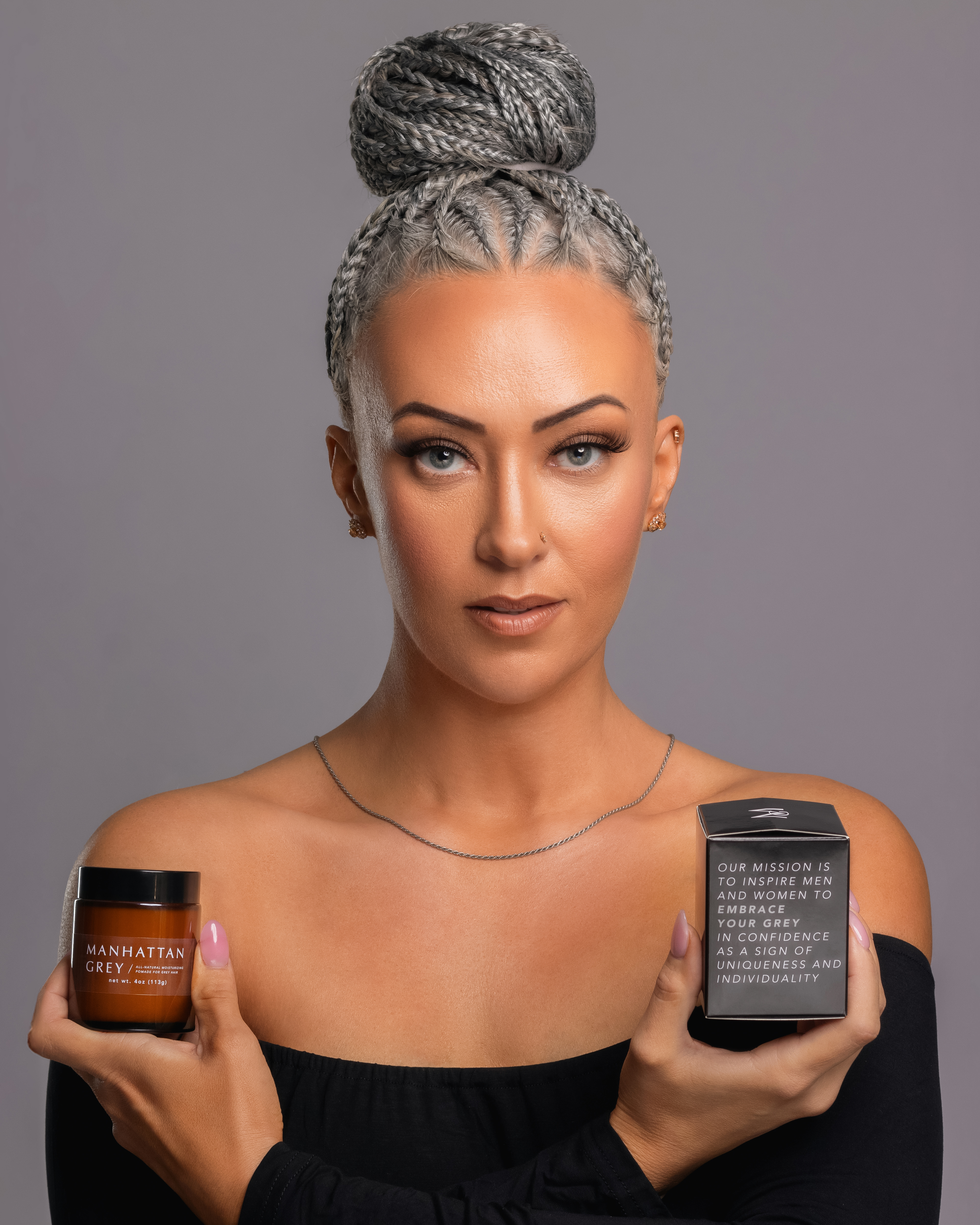
“The pandemic really separated all of us from our beauticians and our barbers and our colorists and stylists. That was when I think there was a big pendulum swing of people just deciding to embrace their gray,” said Kerry Abner, creator and founder of Manhattan Grey, a line of hair care products specifically for Black hair that is graying, and an Instagram page called Black Grey Hair. Though Black hair exists on a spectrum, much of it tends to be drier, more textured, and more brittle than other types, said Abner. As it grays, it needs even more moisture and protection.
Abner, 37, started graying when he was around 20 years old. “Men can kind of weave their way through the gray-hair narrative a little bit more seamlessly,” he said, noting men are often perceived as “distinguished” rather than “old.” Abner originally conceived of Manhattan Grey in 2019 as a product for Black men, but after considerable demand from Black women, he said about 70% of his clientele is now female.
Some Black women emerged from the lockdowns with grown-out gray hair and an entirely new outlook, including “knowing their options for remaining gray,” said Krystin Tunnell, the 40-year-old owner of CGM Curl Studio in Philadelphia. Having discovered some gray hair of her own when her color grew out, Tunnell likes to feature gray hair on her studio’s Instagram.
“I’m huge on that unconventional beauty, specifically because what I’m highlighting as unconventional is really everyday women,” she added. “I want people to see that in every walk of life, they are beautiful all the same.”
Even amid some multicultural support for gray hair, “I don’t feel like I see a lot of Black women with natural hair that wear it fully gray,” said Gaines, citing ageism as a hindrance.
Elaine Lee, a 71-year-old attorney and travel journalist based in California, has also not seen such a movement. Having dyed her hair for many years, “I saw a fellow traveler with beautiful, short gray hair, and I just loved the way she looked and moved in the world,” she recalled. “She was just very confident, strong, attractive, self-possessed, and did not seem to be remotely troubled about the fact that she had gray hair.”
Lee thought to herself, “She and her hair are free. I’d like to have more freedom in my life.”
She grew out her gray during a six-month trip around the world, including stops in France, South Africa, Seychelles, and Australia. While initially worried about how gray hair might affect her dating life as well as her salsa dancing, the concern was short-lived. “There I was with my gray hair, and I dated just as much as I ever dated, and was dancing just as much as I’ve ever danced.”
As far as my own journey to embrace my gray, there wasn’t much I could do about how my bosses perceived gray hair, but I was determined not to feel less attractive. I had wasted too many years pursuing the white standard of beauty. Having finally walked away from the cult of whiteness, I didn’t want to turn around and join the cult of youth.
That cult is, at least in some ways, not for most Black women anyway; melanin tends to keep our skin looking naturally younger. “We definitely don’t show the physical signs of aging as quickly as our non-Black counterparts,” noted Raymond. “It’s sort of understood that we age like fine wines.”
For Black people especially, it’s a blessing to age. Having endured enslavement, Jim Crow violence and pervasive systemic racism, we still live with a multiyear gap in life expectancy between Black and white Americans. And so, it’s an honor for me to live long enough to watch my hair become rich with life experience.
Hopefully, the natural hair movement will similarly evolve, growing into more age diversity. Maybe we’ll arrive at a place where we see gray hair as something to strive for, proof that we are still here, still thriving, as our ancestors dreamed for us.
“I don’t hide my age. [Gray hair] is part of what goes with being 71,” said Lee. “Hallelujah, I made it!”
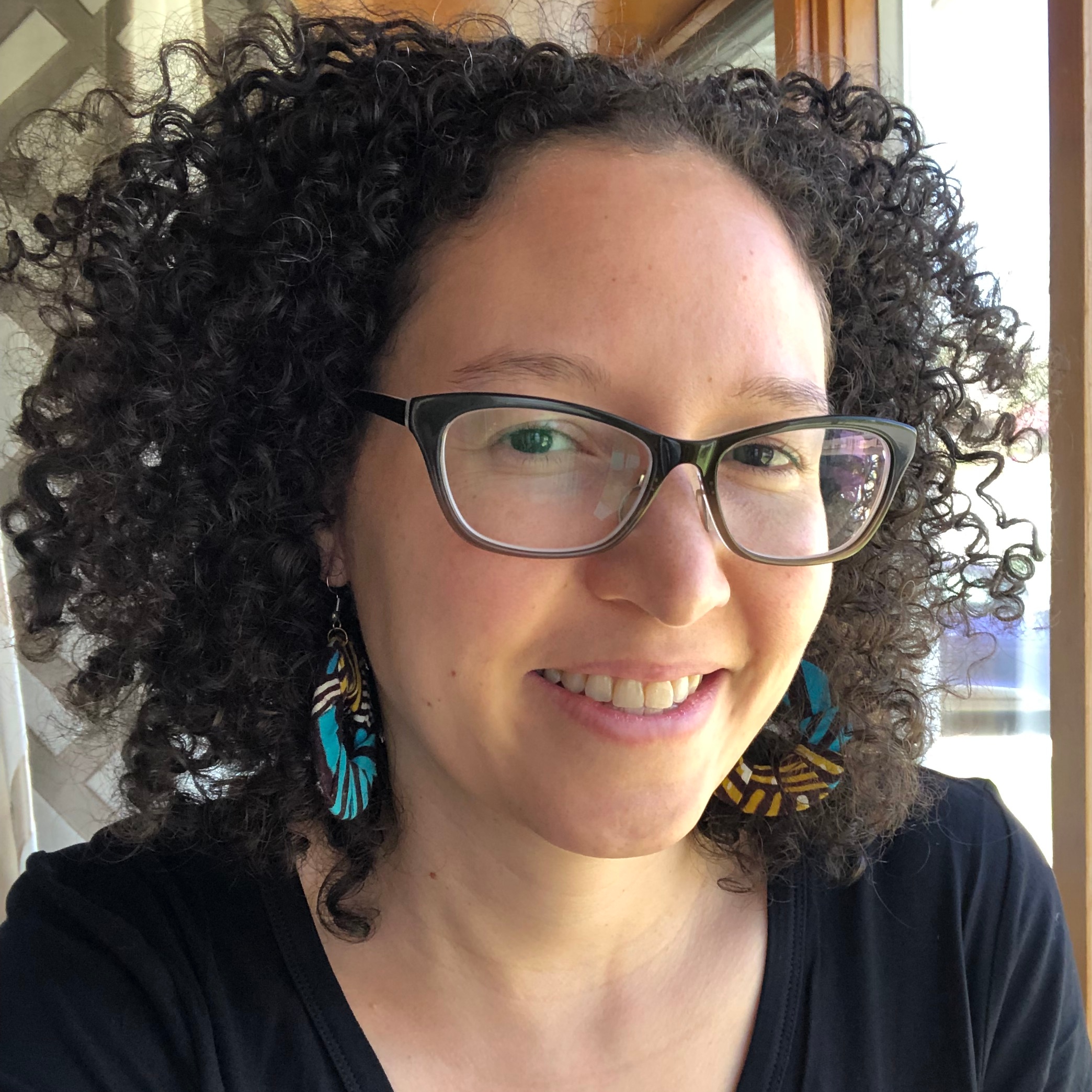
Sarah Enelow-Snyder is a freelance writer from Texas, based in New Jersey. She has an essay in the anthology “Horse Girls” from Harper Perennial.
Never miss a beat: Get our daily stories straight to your inbox with theGrio’s newsletter.
